The Horrors And Pleasures Of The Columbia House Music Club In Six Albums
by Michael H. Rowe
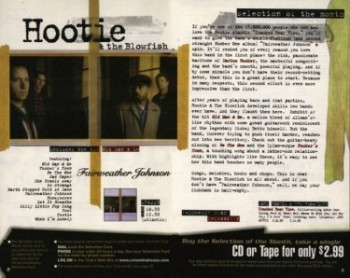
Nostalgia for the cultural touchstones of the 1990s, according to the Times, is a real-life, actual thing. Of course, they’re thinking in terms of Nickelodeon programs like “Doug” and “All That.” I would hasten to add that any good reminiscence of the pre-Lewinsky Clinton years requires a recognition that Columbia House Music Club was both a blessing and a curse for many a nascent music fan. It was for me. My membership fell somewhere between 1993 and 1996, pre-high school, pre-love of record stores. It was through Columbia House’s mail-order catalogs that I received all the Nirvana, Soundgarden and Belly albums I could get my hands on.
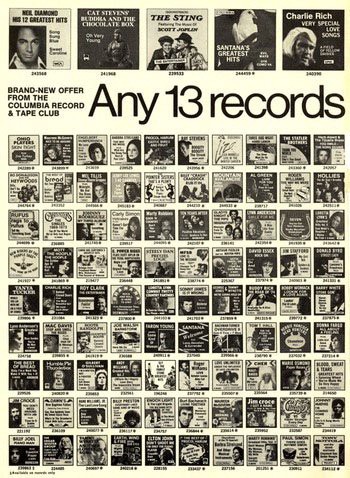
Of course, the club had been around for decades by the time I came aboard; from records through 8-tracks and cassettes to, by the time I joined, CDs. (It exists now only in a DVD incarnation.) During its reign, the Columbia House Music Club was, I’m fairly certain, instrumental in introducing several generations of American teens to the concept of anxiety. For those unfamiliar with the club, you signed up to get “12 CDs for the price of 1!” After that the setup required you to explicitly say no, every month, to certain CDs that would be sent by mail if you weren’t quick enough. The Federal Trade Commission calls this a Prenotification Negative Option Plan, which sounds like the name for an announcement in which you say, “I’d like to announce that I’m exercising my option to make no announcement.” You could order anything you liked from Columbia House, but there was always a stable of undesirables to avoid if you could — or accidentally keep and pay for if you forgot to mail back the form in time.
It was my first memorable encounter with anxiety, which now rules my life like an impeccably dressed dictator wearing nice sunglasses. By a certain date, I would have to say, “No, please do not send me Enya’s The Memory of Trees,” even if I knew nothing about Enya one way or the other. As a budding consumer, trying to learn how to BUY BUY BUY, I wasn’t properly equipped to say NO PLEASE GOD NO. And then, when that Enya CD finally came, I would have to spend a significant percentage of my total financial holdings on an album that I could not return. It was too much stress. I can clearly remember receiving, without realizing it would happen because I had not checked the right box, a number of heavy-metal CDs that I’ve long since misplaced.
Here are some albums that serve for me as reminders of the high and low points of the accidental consumerism that was “12 CDs for the price of 1.”
Candlebox — Candlebox
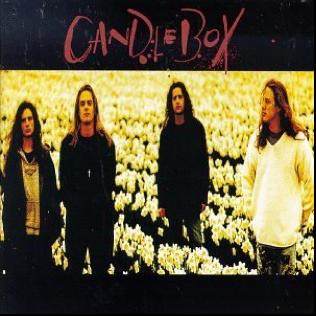
Obligatory. I still have this thing somewhere, but I never really listened to it. Honest! If I was going to caption this band photograph, it would read: “Hey, anyone wearing a surprisingly beautiful sweater — look over there!”
Deliverance — Corrosion of Conformity

I remember there was a picture of the band in one of the Columbia House catalogs. They had long hair, but it was clearly not the flowingly sensitive, yet masculine hair of Candlebox. Corrosion of Conformity had metal hair. Looking at this cover, I remember noticing that an image of a speaker inside what appeared to be a sunflower framed by mirror-image lizards caressing it with their tongues was not really an obvious metaphor for anything and pretty cluttered, pictorially speaking. I didn’t actually use the word “pictorially” back then, though. And probably not “metaphor,” either.
Betty — Helmet
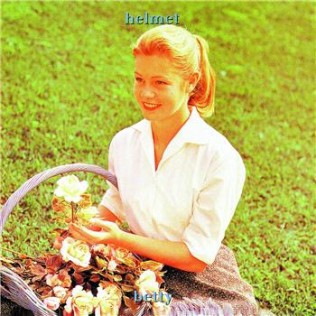
I didn’t buy this record, but given my musical interests at the time (and my cool acquaintances who recommended Betty), I think Helmet would have been a superb purchase. I wonder if the colorized look of this cover reminded me too much of the Smashing Pumpkins’ aesthetic circa Siamese Dream. As a young boy, though, I think the chasteness of the woman on the cover struck me as kind of wiener-y, like a class photo. Maybe I didn’t know what irony was. Sorry, Helmet.
Hints Allegations and Things Left Unsaid — Collective Soul
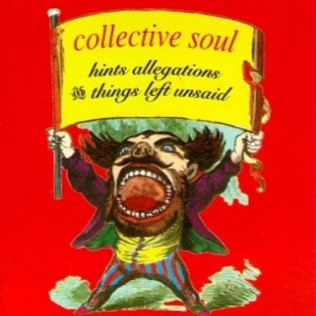
Simultaneously the greatest CD purchase of my early adolescence and proof that I still hadn’t conformed to the electrifying approval for Nirvana that seemed to rule among my grunge-oriented peers. When Collective Soul’s next album came out, I tried to play it at a youth group gathering at my church, but was denounced by a stern 15- or 16-year old girl who informed me that, while Collective Soul’s first album (the one above) was definitely Christian, their second album was not Jesus-approved. I remember feeling really offended. I mean, come on — that second album had that song about not committing suicide! She was clearly trying to kill me.
Slippery When Wet — Bon Jovi

My memories of the early- to mid-’90s are dominated by one overarching pop-culture theory: the ’80s sucked. Super uncool, according to all my peers. I remember that we thought this with real conviction. Regardless, when, at the age of 12 or 13, you’re offered 12 CDs for the price of 1, you realize pretty quickly that you don’t know shit about music, good or bad. So you pick Bon Jovi as filler; it’s a band name you recognize. Then you get the record and look at the album booklet’s pictures of attractive women wearing midriff-bearing t-shirts while washing cars — and then you realize the implications of the album title. And then you maybe feel a little uncomfortable, as though you’re holding something that could magically turn into forbidden pornography at any second.
Hungry for Stink — L7
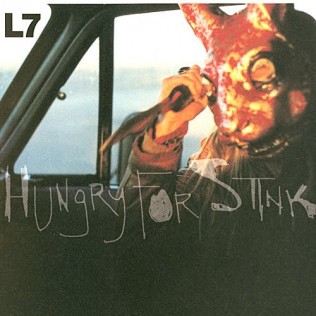
Even at the time, I knew I wasn’t cool enough for this record. Sensitive 13-year-old boys who have just recently become aware that tucking turtlenecks into sweatpants looks awful are definitely not hungry for stink.
Related: Nostalgia Is Not New
Michael H. Rowe likes a couple Enya songs a lot, but still isn’t hungry for stink.
